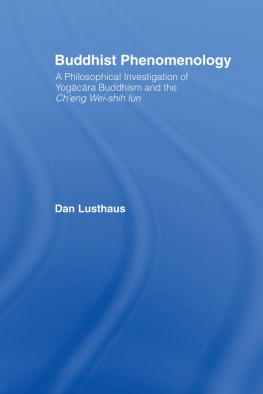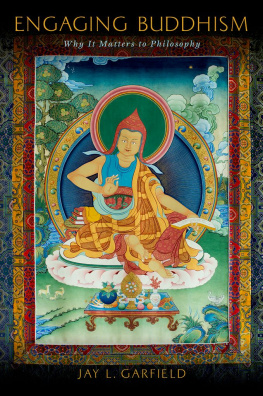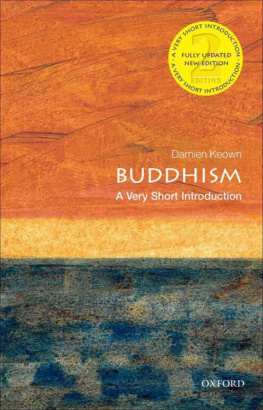BUDDHISM AND AMERICAN CINEMA
SUNY series in Buddhism and American Culture
John Whalen-Bridge and Gary Storhoff, editors
BUDDHISM and AMERICAN CINEMA
EDITED BY
John Whalen-Bridge and Gary Storhoff
FOREWORD BY
Danny Rubin
Cover art Losw / Bigstockphoto (for film reel and file photo) and Beboy / Bigstockphoto (for Buddha statue)
Published by State University of New York Press, Albany
2014 State University of New York
All rights reserved
Printed in the United States of America
No part of this book may be used or reproduced in any manner whatsoever without written permission. No part of this book may be stored in a retrieval system or transmitted in any form or by any means including electronic, electrostatic, magnetic tape, mechanical, photocopying, recording, or otherwise without the prior permission in writing of the publisher.
For information, contact State University of New York Press, Albany, NY
www.sunypress.edu
Production by Diane Ganeles
Marketing by Fran Keneston
Library of Congress Cataloging-in-Publication Data
Buddhism and American cinema / edited by John Whalen-Bridge and Gary Storhoff ; foreword by Danny Rubin.
pages cm. (SUNY series in Buddhism and American culture)
Includes bibliographical references and index.
ISBN 978-1-4384-5349-1 (hc : alk. paper)
1. Buddhism in motion pictures. 2. Motion picturesReligious aspectsBuddhism. 3. Motion picturesUnited StatesHistory and criticism. I. Whalen-Bridge, John, editor of compilation. II. Storhoff, Gary, editor of compilation.
PN1995.9.B795B79 2014
791.43'682943--dc23
2013047789
10 9 8 7 6 5 4 3 2 1
This book is dedicated to the memory of Gary Storhoff.
CONTENTS
Danny Rubin
Charles Johnson
John Whalen-Bridge
Hanh Ngoc Nguyen and R. C. Lutz
Eve Mullen
Jiayan Mi and Jason C. Toncic
Felicia Chan
Jennifer L. McMahon and B. Steve Csaki
Richard C. Anderson and David A. Harper
Karsten J. Struhl
Devin Harner
David L. Smith
Gary Gach
FOREWORD
DANNY RUBIN
I once wrote a movie about a man who rubs a lamp and discovers a genie. The event takes place on a very depressing day in this mans life, and he inadvertently wishes that the whole day had all been a dream. Before you know itpoof! The genie grants his wish, and the mans entire day does turn out to be a dream but not his dream (he should have been more specific!). Instead the dream belongs to someone else, an equally lonely woman, and the story soon becomes hers. When she finally does meet the man with the genie its a big moment because she has truly met the man of her dreams. The story is romantic and sweet and magical, and the dreams within dreams inspired one of my friends to observe, You probably dont know this, but youre Hindu.
Then theres that other movie I wrote about the man who repeats the same day over and over again. February second. Groundhog Day . The same friend observed, You probably dont know this, but youre Buddhist.
My friends observations may or may not have merit. I once wrote a western about a hanging. Does that make me a cowboy? But what I love about writing movies is the way I get to explore interesting stories and simultaneously explore myself. Who is the guy, I ask, who made this choice or that choice? What does he believe that underlies his decisions? What values are revealed? Which are really me? From the mixed dust of dreams and memories, from creations and from discoveries, I refine my own story with every new screenplay, each time getting closer and closer to someone I believe to be me. That is what I get from writing movies. And occasionally some money, too.
When I wrote Groundhog Day I wasnt trying to write a Buddhist movie. But, keep in mind that Phil Connors, the cynical weatherman stuck in time, wasnt trying to become a better person, even though he eventually did exactly that. He was just trying to get through the day. Every morning was a new opportunity for him to ask, Now what? What am I doing here? What could I be doing here? What should I be doing here? The accumulation of days and of experiences pushed Phil toward greater understanding and greater refinement. All it took for him was a sense of mindful awarenessand zero chance of escape.
Writing screenplays is a lot like that. Now what? What am I doing here? What could I be doing here? What should I be doing here? This is a daily meditation on the blank page. Maybe all screenwriters are natural Buddhists.
Of course Im not always looking inward, and I do occasionally seek out perspective and knowledge from others. I mean, I may not be seeking enlightenment but Im not seeking ignorance either.
So, for instance, although I am not personally an expert on either Buddhism or American film, here I find myself on the leading edge of a wonderful collection of essays on the subject, and Im thinking I should probably read them. I invite you to join me. For our convenience they have been placed immediately following this foreword. Will reading these essays bring us any closer to enlightenment? Or better: Will it help us get our screenplays produced? Of course I dont yet know the answer to these questions, but in reading, as in writing, I remain open to the delight of unintended results, and what that can teach me about myself.
ACKNOWLEDGMENTS
T his project was a slow train comin and was pushed along by the hands of Baey Shi Chen, Jacqueline Chia, and Nirmala Iswari. Funding for this wonderfully helpful support was provided by Dean Brenda Yeohs Deans Office of the Faculty of Arts and Social Sciences at the National University of Singapore, paperwork along the way having been signed by heads-of-department Robbie Goh and Lionel Wee of ELL. Thank you all for helping this project along.
Thanks also to Linda Storhoff and Helena Whalen-Bridge for your help with this project.
An earlier version of Eve Mullens Buddhism, Children, and the Childlike in American Buddhist Films appeared in the Journal of Religion and Film as Orientalist Commercializations: Tibetan Buddhism in American Popular Film, 2, no. 2 (October 1998). Likewise, David L. Smiths Beautiful Necessities: American Beauty and the Idea of Freedom appeared in the Journal of Religion and Film 6, no. 2 (October 2002). An earlier version of Jiayan Mi and Jason Toncics Consuming Tibet: Imperial Romance and the Wretched of Holy Plateau appeared in Tamkang Review 42.1 (December 2011).
A TRIBUTE TO GARY STORHOFF
CHARLES JOHNSON
Ive had a good run.
Gary Storhoff (19472011)
I m going to remember Dr. Gary Storhoff as an outstanding scholar to whom I am forever indebted, a gentleman, a dedicated teacher, devoted father and family man, and my brother in the Buddha-dharma. I only learned about his passing away yesterday from his wife. He died at age sixty-three, exactly a week ago on November 7, peacefully at home with his family after a year-long bout with cancer. Never did he complain about his illness or the fact that, as he put it, he was leaving this beautiful world.
We were introduced in the best of possible waysby his work. I read one of his scholarly articles on my work, and I was so impressed by his insight, the depth of his knowledge of literature and philosophy (Western and Eastern), that I called his English department at the University of Connecticut (Stamford) and left a message, thanking him for this gift of the mind and spirit. It was Dr. Storhoff who first made clear the presence of Buddhist epistemology in my story Moving Pictures.














